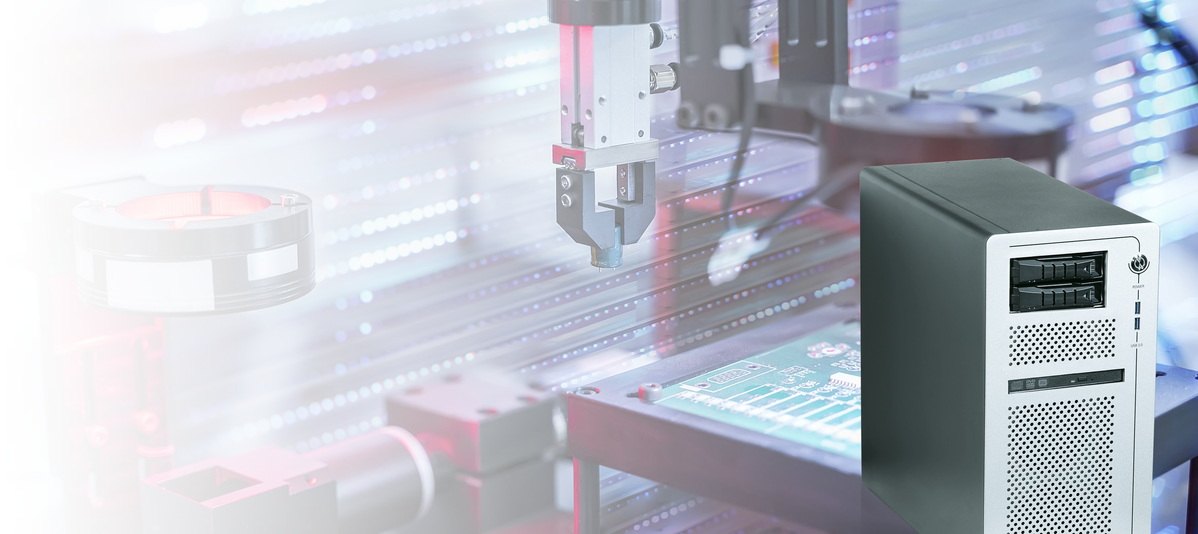Computer Vision is currently developing into the first major application scenario for Artificial Intelligence (AI) in production. Together with Kontron, the IT specialist Robotron has created a platform that makes it much easier to scale AI in quality control, for example.
Above all, the lack of AI know-how proves repeatedly to be a bottleneck in practice. With the Robotron Realtime Computer Vision Platform (RCV), the Dresden-based company is therefore focusing on speaking the language of production managers and production engineers. The goal: easy-to-use, pragmatic solutions that enable engineers without programming experience to solve their inspection problems in real time using computer vision. These include very different use cases based on image processing: defect detection in surfaces, completeness checks for components, sorting and counting tasks or the "reach into the box" for robot gripper arms.
For this, Robotron relies on the AI method of reinforcement learning. "The strategy of using trained and re-trained networks brings many advantages. This is true, for example, when you want to quickly teach a neural network new defect types or different colours of a product or part. In practice, this is important for quickly adapting AI solutions to new contexts," explains Dr Deepa Kasinathan, Product Owner and Group Leader Realtime Computer Vision at Robotron.
Overcoming the hurdle of choosing the right hardware for AI
The platform supports the domain specialists in finding the best solution, mainly because it is not always clear from the outset which neural network is best suited for the respective purpose. The interfaces are designed flexibly, enabling not only the use of one framework or neural network, but very many different alternatives, including PyTorch, TensorFlow, ONNX, Keras or Microsoft CNTK.
But there is a second major challenge: if a company starts working on AI scenarios on its own, it first has to overcome the particularly complex hurdle of hardware selection. On the one hand, there has to be the training level on which the image data - usually in the cloud - is built up. On the other hand, the algorithm itself should run as close to the process as possible on high-performance edge hardware. Often, several months of a project are needed for selection and procurement. To shorten this process, a comprehensive hardware stack was developed that covers up to 90 per cent of all AI scenarios.
High-performance No-Code AI workstation with pre-installed software bundle
Running the RCV software, the AI workstation KWS 3000-CML is at the core of the common standard product. It is optimised for applications that require high performance in terms of computing power and graphics, but at the same time must offer the highest reliability, long-term availability and flexibility. Equipped with powerful Intel® Core™ processors with up to ten cores and the NVIDIA RTX 5000 graphics card, the AI workstation comes with efficient thermal cooling for 24/7 continuous operation at up to 45 degrees Celsius. This allows an evaluation of a captured image to be made in milliseconds.
Flexible AI under real-time conditions
Application of the AI algorithms in real time is a special challenge. The fact that the AI platform passes real endurance tests is shown by its use at Robotron's customer BMW - among other things, directly in the clocked press. During the start-up process for the IX electric motors, the RCV solution completed six tests in parallel in one second in the productive rollout. In some cases, new algorithmic models were used three times a week. "In normal scenarios, this would have been beyond the scope of programming capacities," Deepa Kasinathan recalls.
The simple use and scaling of an otherwise highly complex technology is made possible above all by the no-code approach, for which no programming skills are necessary. New scenarios can be implemented not only by data scientists, but also by production engineers and machine operators, who are often most familiar with the concrete details. In order for the experts on the shop floor to get to grips with the application, Robotron has put a lot of energy into learning videos that are available on YouTube. The computer vision experts from Dresden are convinced: "Democratising AI" as a trend means not least that the bottleneck caused by the shortage of skilled workers in the data science environment will be eliminated.
Read the full case study at: https://www.kontron.com/download/download?filename=/downloads/application-stories/u/kontron_uc_robotron_eu_final.pdf
Caption: The multi-purpose AI workstation enables the training, execution and inference of algorithms for a wide range of models and frameworks.



{{comment.comment}}